For “Winged Wednesday”:
Gunnison Sage-Grouse


“Until 2000, the Gunnison Sage-Grouse was thought to be the Greater Sage-Grouse, but we know now that it is a distinct species. It is characterized by a smaller body size, unique plumage, and low genetic variation, and there are differences in the spectacular mating displays and vocalizations the grouse are noted for.
Occupying 1,511 square miles, the bird is found only in six counties in Colorado, and one in Utah. The bird’s habitat is shrub-steppe (a type of low rainfall natural grassland) below 9,200 feet, including sagebrush, riparian areas, and meadows.
Sage-Grouse eat only sagebrush leaves during the winter and the important wintering sites may change within and between years, depending upon climatic conditions. Lek (mating dance ground) sites within the sagebrush are traditional breeding areas that the grouse return to each year.
The total estimated population size for Gunnison Sage-Grouse is less than 5,000 breeding birds. At present the population of the grouse is declining in and its distribution has been reduced substantially from historical levels. The most pressing threats to the species continue to be the loss, degradation, and fragmentation of its sagebrush habitat.
With ongoing development pressure and a growing human population, firm protection measures for its remaining habitat are urgently needed. The U.S. Fish and Wildlife Service has proposed listing the Gunnison Sage-Grouse as an endangered species and is currently accepting public comments on the proposal.” Help ABC conserve this and other birds and their habitats! Photo: Noppadol Paothong; Range Map, ABC
_______
Mostly Birds, Winners of the 2012 National Wildlife Photo Contest
One of the winners.
“See spectacular images of wildlife from our 42nd annual photography competition.
And the winners are…
The National Wildlife Photo Contest is now in its fourth decade, but entries to the competition continue to surprise the magazine’s editors. Chosen from more than 28,000 images in seven categories, this year’s winners include photos of some truly unexpected animal behaviors: Thousands of salmon encircle a grizzly just beyond the bear’s reach, a seal “plays” with a penguin before eating the prey and a hummingbird attacks an “intruder” that’s actually its own reflection. Other images depict better-known behaviors that are presented in ways we’ve not seen before: A pair of hawks, talon-to-talon, battle in midair and migratory salmon approach a photographer head-on at sunset.” Read stories behind the winning images. at: http://www.nwf.org/News-and-Magazines/National-Wildlife/PhotoZone/Archives/2012/2012-Photo-Contest-Winners-Slideshow.aspx?s_email_id=20130223_MEM_ENG_WLO_February_Edition|STAct
________
Baling twine harmful for nesting birds
Even when such a tragedy is witnessed by a human, osprey nests tend to be high and inaccessible so rescue is rare. When possible, power companies, local electricians and others with long-reaching bucket trucks provide rescue but there are many they can’t get to and likely many more that are never found.
“Nest building is really an amazing phenomenon. Nest-building birds find grass, twigs, sticks, leaves, weeds and spider webs to create a secure home in which to lay and incubate eggs and rear their young to the age of flight. Hawks and eagles will even break sticks off of trees for use in nests by grabbing a branch in flight and snapping it from the tree. Many materials of human manufacture also end up in bird nests, including plastic grocery bags, fabric, yarn and baling twine.
The most devastating, and deadly, of these is baling twine.
To a bird, baling twine looks like perfect nest-building material: it is long and flexible and strong enough to be intertwined with other nest materials to help hold the whole works together. What makes it deadly is exactly what makes it perfect for holding bales — it is really, really hard to break and it never seems to rot.
The solution? Do not allow baling twine to be available to osprey or any wildlife.
Baling twine, even if it is tied in knots, placed in or on the bed of a pickup, will inevitably end up blowing out. Wildlife biologists encourage people to not throw twine in the back of a pickup unless it is contained in a bag or bucket.
When disposing of baling twine, take care to ensure it is either cut into short lengths (12 inches), completely enclosed in a bag or better yet, send it to a recycling service. For those who do not regularly use bales of hay or straw, resolve to pick up and properly dispose of any twine you find exposed where wildlife of any kind might find it and pick it up.” More at: http://www.lagrandeobserver.com/Features/Outdoor/Recreation/Baling-twine-harmful-for-nesting-birds
________
Bald eagles and other birds of prey - the dos and don'ts of finding one in the wild
“The Bald and Golden Eagle Protection Act was put into place in 1940 and prohibits people from “taking” bald or golden eagles. The act defines “take” as “pursue, shoot, shoot at, poison, wound, kill, capture, trap, collect, molest or disturb” and identifies certain criminal penalties for anyone who would “take, possess, sell, purchase, barter, offer to sell, offer to purchase or barter, transport, export or import, at any time or any manner, any bald eagle... [or golden eagle] alive, dead, or any part, nest or egg thereof.”

Jean Huggins of the Onondaga Audubon Society explained that possession of any part of an eagle or anything made by an eagle is a federal offense. He explained that penalties range; for example if someone was to be caught with an eagle feather it would be a much more relaxed punishment.
Disturbing the birds is also loosely defined as any behavior that could agitate the birds and cause an injury to the eagle, a decrease in its productivity by interfering with breeding, feeding, or sheltering behavior or nest abandonment.
The law outlines the possibility of fines anywhere between $2,500 and $10,000 though information provided by the Fish and Wildlife Service website states that fines can reach anywhere up to $100,000. Violators of the act could possibly face jail time, and repeat offenses are considered felonies.
Huggins went on to explain that not just eagles, but all birds of prey are protected federally.” More at: http://www.oneidadispatch.com/articles/2013/03/01/news/doc51315e727b44e106666420.txt
________
It's lights out at Renaissance Center to save birds
GM encourages employees to turn off their lights at night during spring and fall migrations, from March to May and August to October. (Jeff Kowalsky / Bloomberg, file)
“General Motors Co. has been encouraging employees to douse their office lights at night to prevent bird deaths at its world headquarters. For its efforts, the Detroit automaker has been honored by the Detroit Audubon Society.
Detroit is in the middle of an important migratory bird flight path — at times, the winged wanderers are so dense they can be seen on radar — and birds often crash into lit buildings at night or circle them, mesmerized, until they fall to their deaths.” More at: http://www.detroitnews.com/article/20130302/BIZ/303020332
________
Turning Deadwood into Homes for Wildlife
Fallen and dying trees can be just as valuable as healthy live ones
“By planting trees on their property, homeowners can provide food, shelter and nesting sites for wildlife. But most people probably don't realize that fallen and dying trees can be just as valuable as healthy live ones. Decaying and standing dead trees, or snags as they are called, help to feed and house a wide variety of creatures. And like snags, piles of cut wood or branches can also provide refuges and food for small mammals, reptiles, amphibians, birds and butterflies.
"Some people think dead and dying trees look nasty or they're afraid they'll fall on their house so they take down the whole tree," says Kathy McNeil, a naturalist at Huntley Meadows Park in Alexandria, Virginia. "But snags are rich in fungal life and beetle larvae channels."” More at: http://www.nwf.org/news-and-magazines/national-wildlife/gardening/archives/1998/turning-deadwood-into-lively-homes-for-wildlife.aspx
________
SOAR releases eagle, hopes to curb lead ammunition use
“Organizers with the nonprofit ‘Saving Our Avian Resources"’ encouraged hunters to stop using lead ammunition with an eagle release at Jester Park.”
Scavenger Hunt Trailer
“The California Condor neared extinction in the 1980s until biologists nurtured the population and saw their numbers grow upward to over 400. However, these noble birds face a grave threat which prevents them from flourishing further: lead poisoning. SCAVENGER HUNT chronicles the dilemma between bird and man, as the condors are being poisoned by lead which they contract from eating the flesh of deer with lead ammunition fragments.”
_______
Threatened owls to benefit from restrictions on sales of deadliest forms of rodenticides
James Nicol, a manager with Care Pest and Wildlife Control in Burnaby, says traps, not poison, are best for killing rats and mice.
“New federal restrictions on rodenticide sales should reduce incidents of accidental poisonings, including of threatened birds of prey.
"We're hoping there will be fewer incidences of poisoned rats going outside and then getting eaten by wildlife," said Sofi Hindmarch, an independent contract biologist who did her master's thesis on barn owls. "It's an attempt to contain where the poison is going."
A 2009 Environment Canada study of the livers of 164 barn, barred and great horned owls from B.C. and Yukon found evidence of at least one anticoagulant rodenticide in 70 per cent of cases. Barn owls are a threatened species in B.C.” More at:http://www.vancouversun.com/news/Threatened+owls+benefit+from+restrictions+sales+deadliest/8011314/story.html
_______
Sage Sparrows (Amphispiza belli)
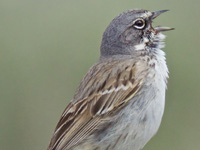 “A chill wind ruffles the feathers of a male Sage Sparrow, as he sings atop a tall sagebrush. It is late February, a few miles from the Columbia River in Central Washington. Sage Sparrows are arriving north from wintering in the Southwestern deserts. Sage Sparrows show up on their breeding grounds earlier than other songbirds, and—even more unusual—they arrive in mated pairs. Of five total subspecies of Sage Sparrow, three are nonmigratory (all of which are found in California). Learn more about Sage Sparrows!”
“A chill wind ruffles the feathers of a male Sage Sparrow, as he sings atop a tall sagebrush. It is late February, a few miles from the Columbia River in Central Washington. Sage Sparrows are arriving north from wintering in the Southwestern deserts. Sage Sparrows show up on their breeding grounds earlier than other songbirds, and—even more unusual—they arrive in mated pairs. Of five total subspecies of Sage Sparrow, three are nonmigratory (all of which are found in California). Learn more about Sage Sparrows!”
_______

Upcoming Shows:
Calendars, Woodpeckers, and Sage-Grouse ...
Gray-breasted
Wood-Wren
SUNDAY Wood-Wrens - A Tropical Duet by Bob Sundstrom LISTEN NOW ►
Long-eared Owl
MONDAY It's About People — Not Just about Birds featuring Denver Holt LISTEN NOW ►
Brown Pelican
TUESDAY How Brown Pelicans Dive by Frances Wood LISTEN NOW ►
Lewis's Woodpecker
WEDNESDAY Lewis's Woodpeckers And Pine Forests by Dennis Paulson LISTEN NOW ►
White-throated Sparrow
THURSDAY Voices and Vocabularies - Three Hidden Sparrows by Bob Sundstrom LISTEN NOW ►
Northern Flicker
FRIDAY Flicker Attack by Chris Peterson LISTEN NOW ►
Greater Sage-Grouse
SATURDAY Sage-Grouse Lek And Grasslands by Bob Sundstrom LISTEN NOW ►
_______
On This Day:
William Hershel discovers Uranus, Mar 13, 1781:
“The German-born English astronomer William Hershel discovers Uranus, the seventh planet from the sun. Herschel's discovery of a new planet was the first to be made in modern times, and also the first to be made by use of a telescope, which allowed Herschel to distinguish Uranus as a planet, not a star, as previous astronomers believed.
Herschel, who was later knighted for his historic discovery, named the planet Georgium Sidus, or the "Georgian Planet," in honor of King George III of England. However, German astronomer Johann Bode proposed the name "Uranus" for the celestial body in order to conform to the classical mythology-derived names of other known planets. Uranus, the ancient Greek deity of the heavens, was a predecessor of the Olympian gods. By the mid-19th century, it was also the generally accepted name of the seventh planet from the sun.
The planet Uranus is a gas giant like Jupiter and Saturn and is made up of hydrogen, helium, and methane. The third largest planet, Uranus orbits the sun once every 84 earth years and is the only planet to spin perpendicular to its solar orbital plane. In January 1986, the unmanned U.S. spacecraft Voyager 2 visited the planet, discovering 10 additional moons to the five already known, and a system of faint rings around the gas giant.”
_______
U.S. Army launches K-9 Corps, Mar 13, 1942:
“On this day in 1942, the Quartermaster Corps (QMC) of the United States Army begins training dogs for the newly established War Dog Program, or "K-9 Corps."
Well over a million dogs served on both sides during World War I, carrying messages along the complex network of trenches and providing some measure of psychological comfort to the soldiers. The most famous dog to emerge from the war was Rin Tin Tin, an abandoned puppy of German war dogs found in France in 1918 and taken to the United States, where he made his film debut in the 1922 silent film The Man from Hell's River. As the first bona fide animal movie star, Rin Tin Tin made the little-known German Shepherd breed famous across the country.
In the United States, the practice of training dogs for military purposes was largely abandoned after World War I. When the country entered World War II in December 1941, the American Kennel Association and a group called Dogs for Defense began a movement to mobilize dog owners to donate healthy and capable animals to the Quartermaster Corps of the U.S. Army. Training began in March 1942, and that fall the QMC was given the task of training dogs for the U.S. Navy, Marines and Coast Guard as well.
The K-9 Corps initially accepted over 30 breeds of dogs, but the list was soon narrowed to seven: German Shepherds, Belgian sheep dogs, Doberman Pinschers, collies, Siberian Huskies, Malamutes and Eskimo dogs. Members of the K-9 Corps were trained for a total of 8 to 12 weeks. After basic obedience training, they were sent through one of four specialized programs to prepare them for work as sentry dogs, scout or patrol dogs, messenger dogs or mine-detection dogs. In active combat duty, scout dogs proved especially essential by alerting patrols to the approach of the enemy and preventing surprise attacks.
The top canine hero of World War II was Chips, a German Shepherd who served with the Army's 3rd Infantry Division. Trained as a sentry dog, Chips broke away from his handlers and attacked an enemy machine gun nest in Italy, forcing the entire crew to surrender. The wounded Chips was awarded the Distinguished Service Cross, Silver Star and the Purple Heart--all of which were later revoked due to an Army policy preventing official commendation of animals.”
________
Yesterday:

The meds they gave me for his URI are supposed to be given to him for 14 days, but they didn’t give me enough to last 14 days at the dose they prescribed. So another trip to that vet, several towns away, is in order. That will probably be on the agenda for Thursday. Terry might as well go with me, so that they can check him out and weigh him. He has been eating voraciously, so hopefully, he has put on some weight.
Ray and I got the new Heat/Air unit out of the car, on to the four-wheel dolly and up the steps into my living room.
Jay hadn’t changed his clocks, so he hadn’t called me to pick him up. It was Ray’s suggestion to go get him, even though he dislikes Jay, as our backs were getting sore from moving big Heat/Air units. I know I put my back out, but I didn’t tell Ray, as I wanted to do my share of the lifting. So Misty and I went to get Jay, and had our walk there while he was getting ready.
We got the AC case set up in the window, and then the unit, and wired it up through the conduit, through the wall to the 220v. On this unit the cord comes out on the other side of the unit, so we had to make some modifications. We took the apron off under the window, and Jay cut a trough in the sheetrock, put the wire in the trough, and covered it up with the apron. And the darn thing wouldn't work. Oh, No! Not again! Jay checked this and that, fiddled and faddled with the wires, but it would not come on.






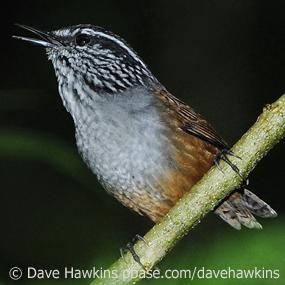
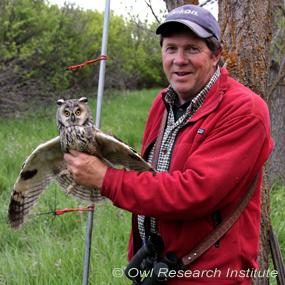
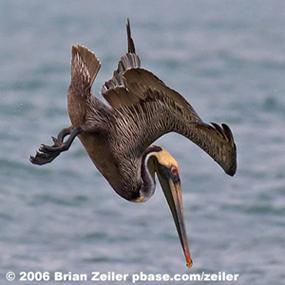
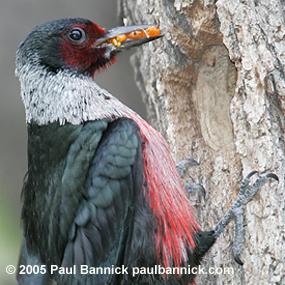

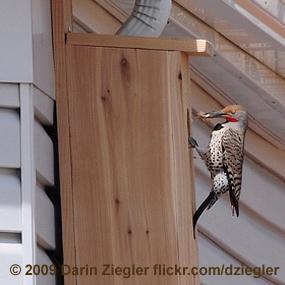
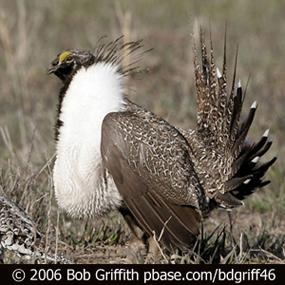















No comments:
Post a Comment